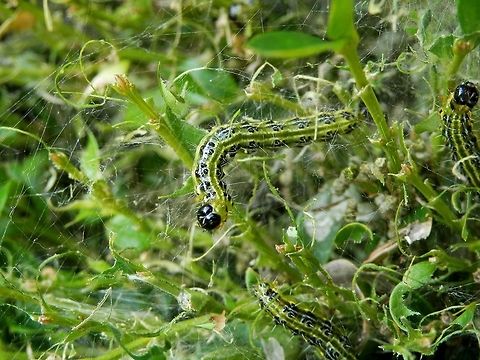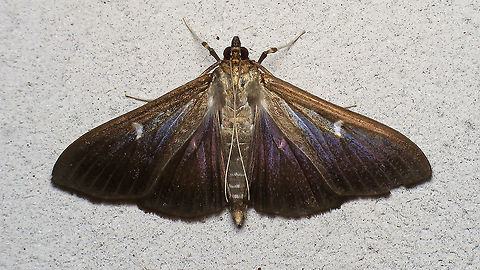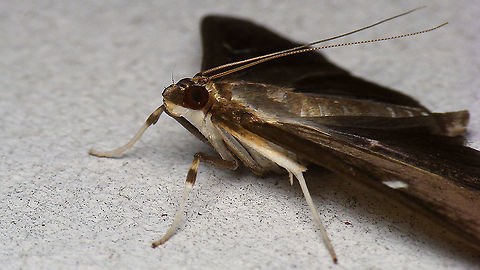
Status
It is an introduced species in Europe, first recorded in Germany in 2006, and subsequently in Switzerland and the Netherlands in 2007, Great Britain in 2008, France and Austria in 2009, Hungary in 2011, Romania and Turkey. It is also known from Slovakia, Belgium and Croatia.During the preparation to the 2014 Olympics in 2012 it was introduced from Italy to Sochi with the planting stock of Buxus sempervirens and in the next year it began to defoliate Buxus colchica in large quantities. In 2013 it was found new to Denmark at several sites on the island of Sjælland.

Reproduction
Eggs are 1 mm in diameter, located under green unattacked leaves. First larvae just coming out from the egg are about 1–2 mm long.Larvae development brings them in four weeks to about 35–40 mm at maximum. There is some shrinkage at the beginning of the nymphosis, pupae are 25–30 mm long, first green with browning longitudinal lines, then more and more brownish. The wingspan of the adult form is 40–45 mm.
Two variants are observed, the most common one is mostly white while the other is most entirely light brown.
There are two or three generations per year with adults on the wing from April/May to September. In the warmest parts of the European importation area, with cold conditions coming late in the year, there might be sometimes four generations per year.
The species overwinters as a juvenile cocooned larva (about 5–10 mm long), protected in an hibernarium made of two leaving buxus leaves solidly joined by silk.

Food
The larvae feed on the leaves and shoots of Buxus species. Young larvae only eat the upper part of the leaf, leaving the hardest inside structure. The leaves are not destroyed completely but appear as "pealed" in small parallel beats lines, or almost completely.These pealed leaves eventually die. Old larvae are the most damaging: they massively and completely eat the leaves, sometimes leaving a thin part at the contour and centre of the leaf, however. Green ball-shaped frass can usually be seen on host plants.
References:
Some text fragments are auto parsed from Wikipedia.